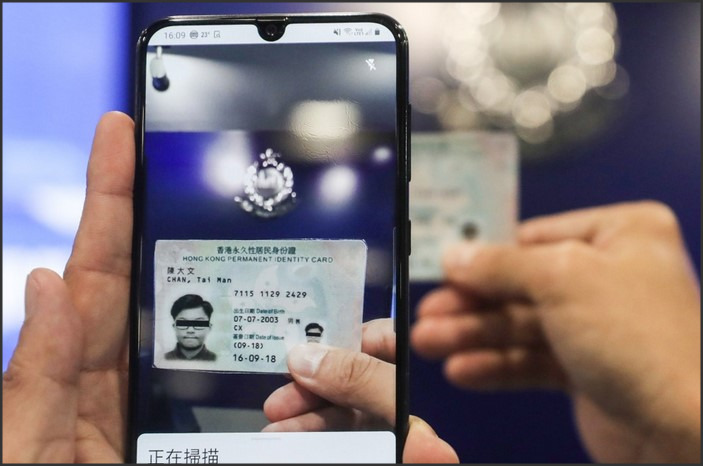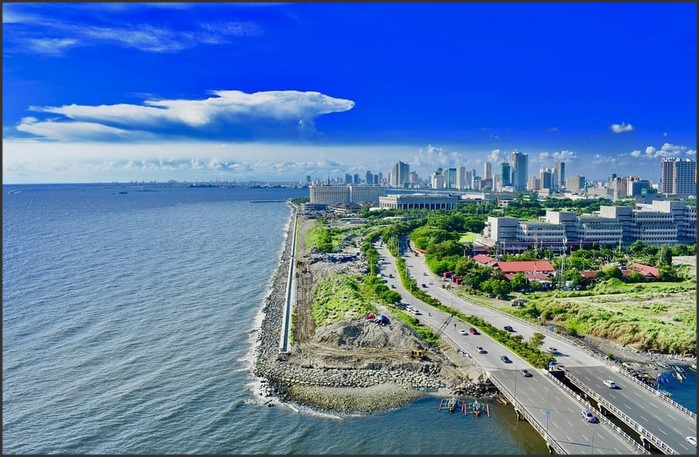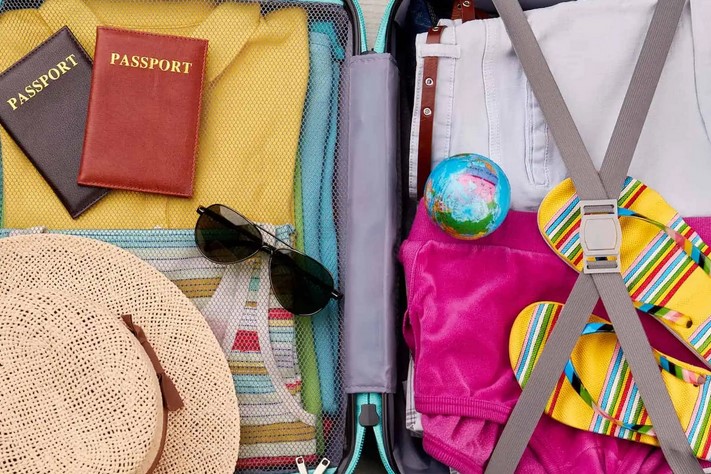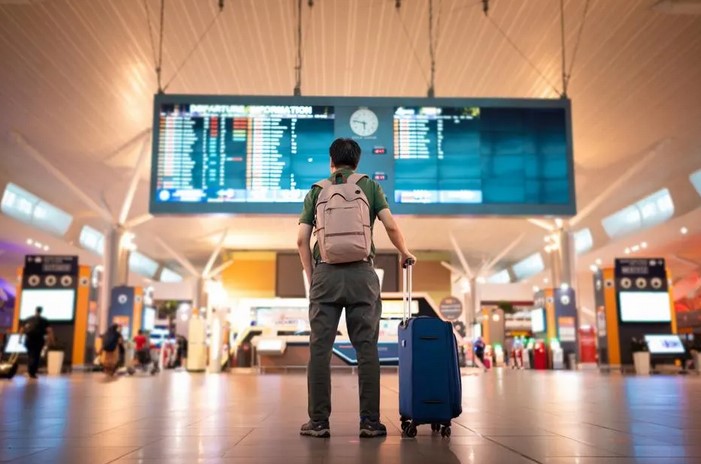Category Archives: Travel
Below the Waves: Underwater Snorkeling Safaris Await

Source:https://www.alluringafrica.com
For those with an adventurous spirit and a love for marine life, there’s a growing trend in travel that promises an unforgettable experience: underwater snorkeling safaris. These immersive excursions offer the chance to explore some of the world’s most vibrant and diverse underwater ecosystems, where colorful coral reefs, exotic fish, and mysterious marine creatures await. Whether you’re a seasoned snorkeler or a beginner, the world beneath the waves holds endless wonders to discover. From the crystal-clear waters of the Maldives to the Great Barrier Reef of Australia, underwater snorkeling safaris are an exciting way to connect with nature and witness the beauty of ocean life up close. In this article, we will explore the allure of underwater snorkeling safaris, highlight the best destinations for these adventures, and provide tips for getting the most out of your snorkeling safari.
1. The Allure of Underwater Snorkeling Safaris
Underwater snorkeling safaris offer a unique way to experience marine ecosystems that few other forms of travel can match. Unlike traditional land-based tours, these safaris allow you to enter the very habitat you wish to explore—beneath the waves. With just a mask, snorkel, and fins, you can float above vibrant coral gardens, drift alongside schools of tropical fish, and witness the stunning biodiversity of the world’s oceans.
The appeal of snorkeling safaris lies in the accessibility and ease of the experience. You don’t need to be an expert diver to enjoy the magic of the underwater world—snorkeling is beginner-friendly, and many of the most popular destinations offer calm, shallow waters that are perfect for exploration. Whether you’re drifting through a reef, swimming with sea turtles, or marveling at the colorful marine life, snorkeling offers an intimate way to connect with nature, all while enjoying the warm, sunlit waters of some of the most beautiful places on Earth.
Why Choose Underwater Snorkeling Safaris?
- Accessibility: Snorkeling requires minimal equipment and training, making it an accessible way for anyone to experience the beauty of the ocean.
- Up-Close Encounters: Unlike other types of marine tourism, snorkeling lets you interact with marine life at a closer, more intimate level. You can swim with schools of fish, glide alongside manta rays, or explore hidden lagoons.
- Environmental Awareness: Snorkeling safaris often focus on conservation, offering a chance to witness firsthand the fragility and wonder of the oceans, while also promoting eco-friendly practices and marine protection.
- Scenic Beauty: Many underwater snorkeling safaris take place in stunning natural environments, from secluded tropical islands to remote coral reefs, providing breathtaking views both above and below the water’s surface.
2. Top Destinations for Underwater Snorkeling Safaris
There are countless destinations around the world that offer spectacular underwater snorkeling safaris, each showcasing unique marine life and ecosystems. From pristine coral reefs to shallow lagoons, these locations are ideal for anyone looking to explore the wonders of the ocean. Here are some of the best places to embark on an underwater snorkeling safari:
1. The Maldives: A Snorkeler’s Paradise
The Maldives is undoubtedly one of the world’s most sought-after snorkeling destinations, with its crystal-clear turquoise waters and some of the most pristine coral reefs on the planet. The Maldives is a series of islands, many of which are surrounded by vibrant coral gardens teeming with fish. Some of the most famous snorkeling spots in the Maldives include Hanauma Bay and Manta Point, where visitors can swim alongside manta rays, sea turtles, and colorful fish.
Whether you’re staying in a luxury overwater bungalow or a beachfront resort, most Maldives accommodations offer direct access to coral reefs and dedicated snorkeling excursions. The warm waters and shallow lagoons make it an ideal location for both beginner and experienced snorkelers alike.
2. Great Barrier Reef, Australia: The Iconic Marine Wonderland
One of the world’s most famous natural wonders, the Great Barrier Reef off the coast of Australia is a must-visit for any snorkeling enthusiast. Stretching over 2,300 kilometers (1,430 miles) and containing over 900 islands, the Great Barrier Reef is home to an astounding variety of marine life, including colorful coral, giant clams, sea turtles, and thousands of species of fish.
Visitors can take part in snorkeling safaris that allow them to explore the reef’s underwater landscapes. Some of the most popular snorkeling spots within the Great Barrier Reef include the Whitsunday Islands, Green Island, and the reef near Cairns. Whether you’re gliding over coral gardens or encountering playful reef sharks, the Great Barrier Reef offers an unparalleled snorkeling experience.
3. Raja Ampat, Indonesia: A Hidden Gem for Snorkelers
Raja Ampat, located in Indonesia’s Papua province, is a relatively undiscovered paradise for snorkeling enthusiasts. Known for its biodiversity, this remote region features an intricate archipelago of islands surrounded by crystal-clear waters and some of the world’s healthiest coral reefs. Raja Ampat is a haven for marine life, offering opportunities to see everything from small, colorful fish to larger pelagic species like sharks and manta rays.
The region is a top destination for those looking for a more off-the-beaten-path snorkeling experience. The area is less commercialized than other well-known snorkeling destinations, so it’s perfect for those seeking a more peaceful and intimate connection with the underwater world.
4. Bonaire, Caribbean Netherlands: A World-Class Reef
Bonaire, a small island in the Caribbean, is home to one of the healthiest and most accessible coral reefs in the world. The island is known for its exceptional visibility, calm waters, and thriving marine life, making it an ideal location for underwater snorkeling safaris. Bonaire is a designated marine park, ensuring the protection of its coral reefs and biodiversity.
Some of the best snorkeling locations on the island include the Bonaire National Marine Park, where you can snorkel in shallow, crystal-clear waters, and the famous Salt Pier, known for its incredible marine life. With more than 80 species of coral and hundreds of species of fish, Bonaire offers an unforgettable snorkeling adventure.
5. Palawan, Philippines: A Tropical Snorkeler’s Dream
Palawan, often referred to as the “last frontier” of the Philippines, is known for its pristine beaches, crystal-clear waters, and rich marine biodiversity. The island offers some of the best snorkeling opportunities in Southeast Asia, with famous locations like the Tubbataha Reefs Natural Park, which is a UNESCO World Heritage site.
Palawan is home to stunning coral gardens, sea turtles, tropical fish, and even the chance to swim with dugongs (sea cows). The warm, shallow waters and beautiful underwater landscapes make it a fantastic location for both beginners and seasoned snorkelers alike.
3. Tips for an Amazing Underwater Snorkeling Safari
While underwater snorkeling safaris are relatively easy and accessible, there are a few things to keep in mind to ensure you have the best experience possible. Here are some helpful tips to make the most of your snorkeling adventure:
1. Choose the Right Equipment
While most snorkeling safaris provide basic equipment such as masks, snorkels, and fins, it’s always a good idea to bring your own gear if possible. Well-fitted masks and snorkels can make a huge difference in comfort and visibility, and a properly sized pair of fins can help you glide more easily through the water. If you wear prescription glasses, consider investing in a prescription snorkel mask to improve your visibility underwater.
2. Know the Best Time to Snorkel
To make the most of your underwater safari, it’s important to understand the best time to visit the region you’re traveling to. Many locations have seasonal variations in water visibility, marine life, and weather conditions. For example, in tropical destinations like the Maldives or Raja Ampat, the dry season typically offers the clearest waters and the best snorkeling conditions. Research the destination’s best months for snorkeling to ensure optimal conditions.
3. Practice Snorkeling Safety
Although snorkeling is generally safe, it’s important to practice basic safety measures. Always snorkel with a buddy, stay close to the guide if on a tour, and avoid touching or disturbing marine life. Keep an eye on your surroundings and make sure you’re aware of currents or waves that might affect your position in the water. Additionally, remember to wear eco-friendly sunscreen to protect the coral reefs and marine life.
Underwater snorkeling safaris offer a thrilling and accessible way to explore the wonders of the ocean. From swimming with manta rays in the Maldives to snorkeling among the vibrant coral gardens of the Great Barrier Reef, these safaris offer a close-up view of some of the world’s most spectacular underwater ecosystems. Whether you are an experienced snorkeler or a beginner, there’s no better way to connect with marine life and experience the beauty of the oceans. So, grab your snorkel, dive in, and get ready to embark on an unforgettable adventure. With the right preparation and a sense of adventure, underwater snorkeling safaris await those eager to explore below the waves.
Stay Among the Vines: Luxury Vineyard Hotels to Book

Source:https://mrhudsonexplores.com
For wine lovers, connoisseurs, or simply those who appreciate the serenity and beauty of sprawling vineyards, a stay at a luxury vineyard hotel offers an unparalleled experience. Imagine waking up to panoramic views of lush grapevines, sipping world-class wine just steps from your room, and enjoying the relaxing atmosphere of a property that perfectly blends luxury with nature. Luxury vineyard hotels combine the best of both worlds: opulence and charm, all set within the heart of renowned wine regions. Whether you’re visiting the rolling hills of Tuscany, the sun-soaked valleys of California, or the historic vineyards of Bordeaux, these hotels provide an immersive escape into wine culture. In this article, we will explore why luxury vineyard hotels should be on your travel radar, highlight some of the top destinations to consider, and offer tips for making the most of your stay.
1. The Allure of Luxury Vineyard Hotels
Luxury vineyard hotels offer more than just lavish accommodations; they offer an entire experience that revolves around the art of winemaking. Set amidst the world’s most famous wine regions, these hotels are designed to help guests fully immerse themselves in the culture of wine, offering everything from private wine tastings and vineyard tours to exceptional dining experiences that highlight local wines. Staying among the vines gives travelers the opportunity to indulge in both the pleasures of luxurious comfort and the sensory joys of wine—making it a perfect retreat for those who want to slow down, relax, and savor the finer things in life.
The appeal of luxury vineyard hotels lies in their ability to blend indulgence with the rustic charm of the countryside. While the location alone—surrounded by rows of vines and breathtaking landscapes—creates an idyllic setting, these properties take it a step further by offering top-tier amenities. Many feature state-of-the-art spas, gourmet restaurants, and private villas with views directly overlooking the vineyards. Whether you’re a seasoned wine enthusiast or a newcomer to the world of wine, a stay in a luxury vineyard hotel is an opportunity to deepen your understanding of wine while enjoying first-class accommodations.
Why Luxury Vineyard Hotels Are the Ultimate Getaway:
- Wine Immersion: You’re not just staying near vineyards—you’re actively participating in the world of wine. Many luxury vineyard hotels offer private wine tastings, vineyard tours, wine-pairing dinners, and even hands-on experiences like grape harvesting or wine blending.
- Scenic Beauty: The lush landscapes surrounding these hotels are often breathtaking, offering the perfect backdrop for a relaxing getaway. Whether it’s a glass of wine on your terrace at sunset or a morning walk through the vines, these hotels offer a tranquil escape from everyday life.
- Exclusive Services: With luxury comes personalized service. From private chauffeurs and sommelier-led tastings to bespoke excursions, staying at a luxury vineyard hotel often includes access to high-end, tailored experiences.
2. Top Luxury Vineyard Hotels Around the World
If you’re ready to book your next luxury getaway, the following vineyard hotels offer some of the best stays in the most prestigious wine regions worldwide. Each of these properties stands out not only for its luxurious accommodations but also for its connection to the land and the wine-making process.
1. Castiglion del Bosco, Tuscany, Italy
Nestled in the heart of Tuscany’s rolling hills, Castiglion del Bosco is a historic estate that combines the charm of an ancient vineyard with the comforts of a modern luxury resort. Located in the Brunello di Montalcino wine region, this vineyard hotel offers guests a unique opportunity to experience world-class wine, delicious Tuscan cuisine, and stunning views of the Val d’Orcia.
The resort features a collection of elegant suites and villas, many of which offer panoramic views of the vineyard and surrounding countryside. On-site amenities include a Michelin-starred restaurant, a private winery tour, and a luxurious spa that specializes in Tuscan-inspired treatments. Guests can also enjoy cooking classes, truffle hunting, and exploring the vast grounds by horseback or by foot.
2. The Lodge at Sonoma, California, USA
The Lodge at Sonoma is an exceptional destination for those looking to explore California’s wine country. Located in the heart of Sonoma Valley, this luxury vineyard hotel combines the region’s rich winemaking history with modern, eco-conscious luxury. The hotel offers a range of accommodations, from stylish guest rooms to private cottages with garden or vineyard views.
The Lodge is known for its intimate and personalized approach to wine tourism. The property offers private wine tastings, a relaxing spa, and an on-site restaurant that serves farm-to-table meals paired with Sonoma wines. Visitors can also take guided wine tours, exploring some of the valley’s top wineries and tasting rooms. The Lodge at Sonoma is perfect for travelers who want to experience the best of California’s wine country while enjoying top-tier accommodations and amenities.
3. Château de Pommard, Burgundy, France
In the heart of Burgundy, one of the world’s most renowned wine regions, Château de Pommard is an exclusive vineyard hotel that offers a luxurious, immersive experience. The property is located just outside the village of Pommard, near Beaune, and offers visitors a chance to stay in a historic château that dates back to the 18th century.
Château de Pommard is more than just a hotel; it’s a wine lover’s paradise. The estate’s vineyard is renowned for producing some of Burgundy’s finest Pinot Noir and Chardonnay wines. Guests can take private tours of the vineyard and cellar, enjoy tastings of the estate’s wines, and even participate in wine workshops. The château itself is beautifully restored, with elegant rooms and a Michelin-starred restaurant that serves dishes paired with the estate’s wines. If you’re looking for a luxurious and educational wine experience, Château de Pommard is the place to be.
4. Delaire Graff Estate, Stellenbosch, South Africa
Located in South Africa’s renowned wine-producing region of Stellenbosch, Delaire Graff Estate is an extraordinary vineyard hotel that combines exceptional wine with breathtaking views of the surrounding mountains and vineyards. This five-star property offers luxury accommodations in beautifully designed rooms and villas, many of which feature sweeping views of the valley below.
Delaire Graff Estate is home to an impressive collection of wines, and guests are invited to enjoy private wine tastings in the estate’s cellar or on the terrace overlooking the vines. In addition to wine-related activities, the property also boasts a luxurious spa, an art gallery, and a restaurant that serves exquisite dishes prepared with locally sourced ingredients. For wine lovers seeking a mix of culture, art, and luxury, Delaire Graff is a top-tier destination.
5. Antinori nel Chianti Classico, Tuscany, Italy
The Antinori family’s vineyards in the Chianti Classico region of Tuscany offer one of the most modern and luxurious vineyard hotel experiences in Italy. Antinori nel Chianti Classico is not just a winery—it’s a world-class destination for wine enthusiasts and travelers alike. This state-of-the-art winery and vineyard complex offers a blend of cutting-edge design with the timeless beauty of Tuscany.
The property offers stylish, minimalist accommodations with views of the surrounding vineyards, a wine museum, and a restaurant that features local dishes paired with Antinori’s award-winning wines. Guests can tour the facility’s impressive cellars, take part in guided tastings, and even explore the nearby Tuscan countryside by bike or on foot. It’s an ideal destination for those who appreciate both the modern and the traditional in their wine experience.
3. Tips for Booking a Stay at a Luxury Vineyard Hotel
Booking a stay at a luxury vineyard hotel is a fantastic way to indulge in world-class wine and stunning landscapes, but there are a few things to keep in mind to ensure a smooth and enjoyable experience:
- Plan Your Visit During Harvest Season: If you want to experience the magic of grape harvesting, visit during the harvest season, which typically occurs in late summer to early fall, depending on the region.
- Book in Advance: Luxury vineyard hotels can be in high demand, especially during peak seasons, so it’s wise to book your stay several months in advance.
- Consider Wine Tasting Packages: Many luxury vineyard hotels offer special packages that include wine tastings, tours, and meals. These packages are often a great way to get the most out of your stay.
- Explore the Surrounding Region: Don’t forget to explore the local wine region beyond the vineyard hotel. Many regions offer multiple wineries, small towns, and cultural experiences that can enrich your stay.
Luxury vineyard hotels offer a unique blend of indulgence, relaxation, and immersion into the world of wine. From the world-class vineyards of Tuscany to the stunning landscapes of Stellenbosch, these properties offer unforgettable experiences for those who appreciate the finer things in life. Staying among the vines is not just about enjoying exquisite wine; it’s about connecting with the land, learning about winemaking, and enjoying a luxurious retreat in some of the most beautiful settings in the world. Whether you’re a wine connoisseur or simply seeking a peaceful getaway, luxury vineyard hotels provide the perfect escape to unwind and savor the best that nature and wine have to offer.
SM Supermarket Online: Grocery Shopping at Your Fingertips

Source : https://contents.smsupermalls.com
SM Supermarket Online is a digital platform that revolutionizes the grocery shopping experience by bringing it to your fingertips. It is an online service provided by SM Supermarket, one of the leading supermarket chains in the Philippines. This platform allows customers to browse through a wide range of products, from fresh produce to household essentials, and purchase them online. With a user-friendly interface and efficient delivery service, SM Supermarket Online ensures a convenient and hassle-free shopping experience for its customers, right from the comfort of their homes.
Maximizing Convenience: SM Supermarket Online – Grocery Shopping at Your Fingertips
In the digital age, convenience is king. As technology continues to evolve, it has significantly transformed the way we conduct our daily activities, including grocery shopping. One of the leading pioneers in this digital revolution is SM Supermarket, a prominent supermarket chain in the Philippines. Recognizing the growing demand for online shopping, SM Supermarket has launched its online platform, SM Supermarket Online, providing customers with the convenience of grocery shopping at their fingertips.
SM Supermarket Online is a testament to the supermarket’s commitment to customer convenience and satisfaction. It offers a wide range of products, from fresh produce and pantry staples to household items and personal care products. This online platform allows customers to browse through thousands of items at their leisure, compare prices, and make informed decisions about their purchases.
The process of shopping on SM Supermarket Online is straightforward and user-friendly. Customers can easily navigate through the different categories of products, add items to their virtual cart, and proceed to checkout when they are ready. The platform also allows customers to choose their preferred delivery date and time, providing them with the flexibility to plan their grocery shopping around their busy schedules.
One of the key features of SM Supermarket Online is its home delivery service. Once customers have completed their online shopping, their groceries are carefully packed and delivered straight to their doorstep. This service eliminates the need for customers to carry heavy bags or wait in long queues, making grocery shopping a more pleasant and hassle-free experience.
In addition to home delivery, SM Supermarket Online also offers a click-and-collect service. This service allows customers to shop online and pick up their groceries from their chosen SM Supermarket branch. This option is particularly beneficial for customers who prefer to personally inspect their fresh produce or those who wish to combine their grocery pick-up with other errands.
SM Supermarket Online also prioritizes the safety and security of its customers. The platform uses secure payment gateways, ensuring that customers’ personal and financial information is protected. Customers can choose from a variety of payment methods, including credit and debit cards, online banking, and cash on delivery.
Moreover, SM Supermarket Online is not just about convenience; it’s also about providing value for money. The platform regularly offers exclusive deals and promotions, allowing customers to save on their grocery shopping. Customers can also earn points on their SM Advantage Card, which they can use to avail of discounts and rewards.
In conclusion, SM Supermarket Online is revolutionizing the way we do grocery shopping. By combining the convenience of online shopping with the wide range of products and services offered by SM Supermarket, this platform is providing customers with a seamless and enjoyable shopping experience. Whether you’re a busy professional, a parent juggling multiple responsibilities, or simply someone who values convenience, SM Supermarket Online is a reliable and efficient solution for your grocery shopping needs.SM Supermarket Online provides a convenient and efficient platform for grocery shopping. It allows customers to shop for their daily necessities from the comfort of their homes, saving them time and effort. The wide range of products available ensures that customers can find almost everything they need. Therefore, SM Supermarket Online is a practical solution for those seeking a hassle-free grocery shopping experience.
Hong Kong Identity: What Do You Call Someone from Hong Kong?

Source : https://cdn.i-scmp.com
Someone from Hong Kong is typically referred to as a Hongkonger. This term is used to denote a person who was born in, or is a resident of, Hong Kong. The identity of a Hongkonger is often associated with a unique blend of Chinese heritage and Western influences, due to the city’s history as a British colony and its location in the heart of Asia.
Understanding the Nomenclature: What Do You Call Someone from Hong Kong?
Hong Kong, a vibrant city known for its towering skyscrapers, bustling markets, and rich cultural heritage, is home to a diverse population. The city’s unique history, which includes periods of British colonial rule and subsequent return to Chinese sovereignty, has shaped its identity in profound ways. This unique blend of Eastern and Western influences has led to a distinct sense of identity among its residents. However, the question of what to call someone from Hong Kong is not as straightforward as it might seem, and understanding the nomenclature requires a nuanced appreciation of the city’s complex history and cultural dynamics.
Traditionally, people from Hong Kong are referred to as “Hongkongers”. This term is widely used in English-speaking contexts and is generally accepted as the standard English designation for residents of the city. It is a term that encapsulates the city’s unique identity, reflecting its distinct culture, language, and way of life. However, the term “Hongkonger” is not without its controversies and complexities, particularly in the context of the city’s relationship with mainland China.
In Cantonese, the most commonly spoken language in Hong Kong, residents often refer to themselves as “Hong Kong people” or “Hong Kong citizens”. These terms, while similar in meaning to “Hongkonger”, carry a slightly different connotation. They emphasize the city’s distinctiveness and autonomy, reflecting a sense of local pride and identity that is separate from mainland China. This distinction is significant, given the ongoing debates about Hong Kong’s political status and its relationship with the mainland.
In contrast, the Chinese government and many mainland Chinese often refer to people from Hong Kong as “Hong Kong compatriots” or “Hong Kong Chinese”. These terms emphasize the city’s status as a Special Administrative Region of China and its residents’ Chinese nationality. They reflect a perspective that views Hong Kong as an integral part of China, despite its unique characteristics and semi-autonomous status.
The use of these different terms is not merely a matter of semantics. It reflects deeper issues of identity, politics, and belonging. For many Hongkongers, the choice of term is a personal decision that reflects their own sense of identity and their views on the city’s relationship with mainland China. Some prefer to identify as “Hongkongers”, emphasizing their unique local identity and culture. Others prefer to identify as “Hong Kong Chinese”, emphasizing their Chinese heritage and nationality.
In conclusion, the question of what to call someone from Hong Kong is a complex one that reflects the city’s unique history and cultural dynamics. Whether one chooses to use “Hongkonger”, “Hong Kong people”, “Hong Kong citizen”, or “Hong Kong Chinese”, it is important to understand the nuances and implications of these terms. They are not just labels, but expressions of identity that carry significant cultural, political, and personal meanings. As such, they offer a fascinating insight into the complexities of Hong Kong’s identity and its ongoing debates about nationality, culture, and belonging.Someone from Hong Kong is typically referred to as a Hongkonger.
Unveiling ‘Small’ in Tagalog: Exploring Language and Culture

Source : https://www.polilingua.com
“Unveiling ‘Small’ in Tagalog: Exploring Language and Culture” is a comprehensive study that delves into the intricate nuances of the Tagalog language and Filipino culture. It focuses on the concept of ‘small’ or ‘maliit’ in Tagalog, examining its various interpretations and uses within the language and how it reflects the values, beliefs, and societal norms of the Filipino people. This exploration not only provides a deeper understanding of the Tagalog language but also offers insights into the rich and diverse culture of the Philippines.
Unveiling ‘Small’ in Tagalog: A Deep Dive into Language and Culture
Language is a fascinating tool that not only facilitates communication but also serves as a window into the culture and worldview of its speakers. One such language, Tagalog, spoken by a significant portion of the population in the Philippines, offers a unique perspective on the concept of ‘small’. This article aims to unveil the meaning of ‘small’ in Tagalog, exploring its linguistic nuances and cultural implications.
In Tagalog, the term for ‘small’ is ‘maliit’. However, the word ‘maliit’ is not merely a descriptor of size. It carries with it a wealth of cultural connotations and implications that extend far beyond its literal meaning. The use of ‘maliit’ in various contexts provides a glimpse into the Filipino worldview and cultural values.
In the Filipino culture, the concept of ‘small’ or ‘maliit’ often carries a sense of humility and modesty. For instance, when someone compliments a Filipino’s home, it is common for them to respond with “maliit lang” or “it’s just small”. This response is not necessarily a factual description of the size of the house, but rather a display of humility, a trait highly valued in the Filipino culture.
Moreover, ‘maliit’ is also used to express endearment and affection. For example, parents often refer to their children as ‘maliit’ regardless of their actual size or age. This usage reflects the Filipino’s strong family ties and the protective and nurturing nature of their familial relationships.
Interestingly, ‘maliit’ can also be used to downplay the seriousness of a situation or issue. When faced with a problem, Filipinos might say “maliit na bagay” or “it’s a small thing”. This phrase is often used to express resilience and optimism, highlighting the Filipino’s ability to remain positive and hopeful in the face of adversity.
However, the use of ‘maliit’ is not always positive. It can also be used to belittle or diminish someone or something. For instance, saying “maliit na tao” or “small person” can imply that someone is insignificant or unimportant. This usage reflects the hierarchical nature of Filipino society, where status and power play a significant role.
In conclusion, the Tagalog word ‘maliit’ or ‘small’ is a linguistic treasure trove that offers a deep insight into the Filipino culture. It is a testament to the richness and complexity of language, demonstrating how a single word can carry a multitude of meanings and connotations. By exploring ‘maliit’, we not only learn about the Filipino’s perception of ‘small’ but also gain a deeper understanding of their values, attitudes, and worldview. Therefore, the study of language, such as Tagalog, is not just about learning vocabulary and grammar. It is also about understanding the culture and people behind the language.The exploration of the concept of ‘Small’ in Tagalog language and culture reveals the rich and diverse nuances of this term in various contexts. It highlights the intricate relationship between language and culture, demonstrating how the interpretation and usage of a seemingly simple term can reflect deeper cultural values and perspectives.
How to Type ‘Ñ’ on Your PC: A Quick Guide

Source : https://static1.howtogeekimages.com
This quick guide provides step-by-step instructions on how to type the Spanish letter ‘Ñ’ on your PC. Whether you’re writing in Spanish or any other language that uses this special character, this guide will help you easily and quickly insert ‘Ñ’ into your text. It covers various methods including using keyboard shortcuts, character maps, and alt codes.
Mastering Special Characters: How to Type ‘Ñ’ on Your PC – A Quick Guide
Mastering the use of special characters on your PC can be a daunting task, especially if you’re not familiar with the various keyboard shortcuts and commands. One such special character that often poses a challenge is the ‘Ñ’, a letter that is commonly used in Spanish and other languages. This article provides a quick guide on how to type ‘Ñ’ on your PC.
Typing ‘Ñ’ on your PC is not as complicated as it may seem. In fact, there are several ways to do it, and once you get the hang of it, it becomes second nature. The first method involves using the Alt key in combination with a specific numeric code. To type ‘Ñ’, you need to hold down the Alt key and then type the numeric code 165 or 209 on your numeric keypad. It’s important to note that this method only works if you have a numeric keypad on your keyboard. If you’re using a laptop without a numeric keypad, this method may not work.
The second method involves using the Character Map, a utility that comes pre-installed on all Windows PCs. To access the Character Map, you need to click on the Start button, then navigate to All Programs, Accessories, System Tools, and finally, Character Map. Once the Character Map is open, you can scroll through the list of characters until you find the ‘Ñ’. To insert the character into your document, you simply need to select it, click on the Select button, and then click on the Copy button. You can then paste the character into your document by pressing Ctrl+V.
The third method involves changing your keyboard layout to the United States-International layout. This layout allows you to type special characters by pressing the right Alt key (also known as the AltGr key) in combination with another key. To type ‘Ñ’, you need to press the right Alt key and the N key at the same time. To change your keyboard layout, you need to go to the Control Panel, then click on Clock, Language, and Region, and then click on Change keyboards or other input methods. From there, you can add the United States-International layout to your list of keyboards.
In conclusion, typing ‘Ñ’ on your PC is not as difficult as it may seem. Whether you choose to use the Alt key in combination with a numeric code, the Character Map, or the United States-International keyboard layout, the process is relatively straightforward. With a bit of practice, you’ll be able to type ‘Ñ’ with ease, enhancing your ability to communicate in Spanish and other languages that use this special character. Remember, mastering special characters on your PC is not just about learning new keyboard shortcuts or commands, it’s also about expanding your communication skills and embracing the diversity of languages.In conclusion, typing ‘Ñ’ on your PC can be achieved through various methods such as using the Alt code (Alt + 164 or Alt + 165), using the Character Map, or changing the keyboard layout to International English. These methods provide quick and easy ways to insert the ‘Ñ’ character in your text.
Paris Packing List: Essentials for Your French Adventure

Source : https://woyago.com
The Paris Packing List: Essentials for Your French Adventure is a comprehensive guide that provides you with all the necessary items you need to pack for your trip to the City of Lights. This list includes everything from clothing suitable for the city’s unpredictable weather, to essential travel documents, and even recommendations for compact, portable gadgets. It is designed to ensure that you are well-prepared for any situation that may arise during your French adventure, allowing you to enjoy your trip to the fullest without any worries.
The Ultimate Paris Packing List: Essentials for Your French Adventure
Embarking on a French adventure to the enchanting city of Paris requires careful planning and preparation. The city’s diverse weather conditions, coupled with its rich culture and fashion-forward lifestyle, necessitate a well-thought-out packing list. This article will guide you through the essentials you need to pack for your Parisian adventure, ensuring you are well-equipped for every eventuality.
Firstly, Paris is renowned for its unpredictable weather. Therefore, it is crucial to pack clothing that can be layered. Lightweight sweaters, cardigans, and scarves are perfect for this purpose. They can be easily added or removed as the temperature fluctuates. A waterproof jacket is also a must-have, as sudden showers are not uncommon in the city.
Next, comfortable walking shoes are an absolute necessity. Paris is a city best explored on foot, with its charming streets, iconic landmarks, and hidden gems. While Parisians are known for their chic style, they also value comfort. A pair of stylish yet comfortable sneakers or flats will serve you well as you traverse the city’s cobblestone streets.
In addition to clothing, there are several other essentials that should be on your Paris packing list. A universal power adapter is one such item. France uses Type E power outlets, which may be different from your home country. Therefore, a universal adapter will ensure that you can charge your devices without any issues.
Furthermore, a reliable map or guidebook is invaluable. While digital maps are convenient, they rely on a stable internet connection, which may not always be available. A physical map or guidebook can be a lifesaver in such situations, helping you navigate the city with ease.
Paris is also a city of art and culture, with numerous museums and galleries. If you plan on visiting these, it is advisable to pack a small notebook and pen. This will allow you to jot down notes or sketch the beautiful artworks that you encounter.
Moreover, Paris is known for its culinary delights. From croissants and baguettes to escargot and foie gras, the city offers a plethora of gastronomic experiences. However, if you have any dietary restrictions or allergies, it is wise to carry a translated list of these. This will ensure that you can communicate your needs effectively to restaurant staff and avoid any potential health issues.
Lastly, while Paris is generally safe, it is always prudent to take precautions. A money belt or neck wallet can be useful to keep your valuables safe while you explore the city. Also, it is advisable to have photocopies of your important documents, such as your passport and travel insurance, in case of any unforeseen circumstances.
In conclusion, packing for a trip to Paris involves more than just filling a suitcase with clothes. It requires careful consideration of the city’s weather, culture, and lifestyle. By packing the essentials mentioned above, you can ensure that you are well-prepared for your French adventure, ready to immerse yourself in the magic of Paris.In conclusion, a Paris packing list for a French adventure should include essentials such as comfortable walking shoes, versatile clothing items for various weather conditions, a reliable map or guidebook, travel adapter for electronics, toiletries, and important documents. Packing light and smart is key to enjoying your trip to Paris.
Do You Know the 6 Most Popular Tourist Cities in South Africa?

South Africa is synonymous with diversity, whether it’s in terms of nature, culture, people, or cities. In this article, we’ll focus on South Africa’s most popular tourist cities. Let’s introduce them.
- Johannesburg
Johannesburg is the best city to visit in South Africa for its rich history and street art. It is also the largest city in South Africa. Johannesburg, also known as “Joburg,” spans over 2000 km² (770 mi2), making it larger than New York. You’ll find almost everything here—excellent restaurants, shops, and nightclubs.
However, it is most famous for its mining origins, which is why you might know it as the “City of Gold.” But now, let’s talk about what to see in the city. Be sure to visit the Apartheid Museum, explore the suburb of Soweto, check out the Rosebank Market, and admire the street art in the Maboneng Precinct.
- Cape Town
The most visited and tourist-favorite city in South Africa is Cape Town, which blends African and European cultures, traditional and modern elements, magnificent nature, and vibrant city life.
The city is dominated by Table Mountain, at the foot of which lies the Kirstenbosch Botanical Garden. Don’t miss a visit to Boulder’s Beach, known for its protected cove where you can see African penguins.
Cape Town is also located near Robben Island, where Nelson Mandela was imprisoned during apartheid.
3. Knysna
Perhaps less well-known but still a very popular city in South Africa is Knysna. Knysna is situated on a natural lagoon and is flanked by two sandstone cliffs. You’ll particularly enjoy the beaches and lagoons, which remain relatively untouched by tourist traffic. The city is also home to an elephant park where you can observe the animals and walk among them.
- Port Elizabeth
Port Elizabeth is the most populous city in South Africa. It features an important naval port and 40 kilometers (25 mi) of beaches, ideal for swimming, surfing, diving, or watching whales and dolphins.
- Pretoria
Pretoria is the capital city of South Africa, home not only to government institutions and embassies but also to beautiful architectural buildings and museums where you can explore various African cultures and nations.
Pretoria is also known as “Jacaranda City” due to the jacaranda trees that bloom in the spring.
- East London
East London stretches between the Nahoon River and the Buffalo River. If you’re a nature lover, don’t miss the museum where you can see the last remaining egg of the dodo bird, as well as the Nahoon Footprints—the oldest human footprints. Be sure to visit Nahoon Beach, renowned as a world-class surfing destination.
Travel Insurance After Departure: Is It Still Possible?

Source : https://imageio.forbes.com
Travel Insurance After Departure: Is It Still Possible? is an informative piece that explores the possibility and conditions of obtaining travel insurance after one has already embarked on their journey. It delves into the intricacies of various insurance policies, the risks involved in traveling without insurance, and the potential solutions offered by certain insurance providers for post-departure coverage. This article aims to provide clarity and guidance for travelers who find themselves in need of insurance after their trip has already begun.
Understanding the Possibility of Acquiring Travel Insurance After Departure
Travel insurance is a crucial aspect of any journey, providing a safety net for unforeseen circumstances that may arise during your trip. However, there are instances when one might forget to purchase travel insurance before departure or simply underestimate its importance. This raises the question: is it still possible to acquire travel insurance after departure? The answer is yes, but with certain conditions and limitations.
Traditionally, travel insurance is purchased before embarking on a journey. This is because most insurance providers require that the policy be in place before the start of the trip. The rationale behind this is simple: insurance is meant to provide coverage for unexpected events. If a policy is purchased after departure, the risk of such events occurring is already in play, which goes against the fundamental principle of insurance.
However, in recent years, some insurance companies have begun to offer post-departure travel insurance. This is a welcome development for travelers who may have forgotten to purchase a policy before leaving or those who realize the importance of insurance mid-journey. It’s important to note, though, that these policies often come with certain restrictions and may not offer the same level of coverage as traditional pre-departure policies.
For instance, post-departure travel insurance typically does not cover events that have already occurred. If you fall ill or lose your luggage before purchasing the policy, these will not be covered. Additionally, there may be a waiting period before the coverage takes effect, to prevent people from buying insurance only after an incident has occurred.
Moreover, the cost of post-departure travel insurance can be significantly higher than its pre-departure counterpart. This is due to the increased risk that insurance companies take on by insuring someone who is already traveling. Despite the higher cost, the peace of mind that comes with knowing you’re covered in case of emergencies can make the investment worthwhile.
It’s also worth noting that not all types of travel insurance can be purchased after departure. For example, trip cancellation insurance, which reimburses you for pre-paid, non-refundable travel expenses if you need to cancel your trip due to certain covered reasons, must be purchased before your trip begins. On the other hand, policies that cover medical expenses, emergency evacuations, and other similar incidents can often be purchased after departure.
In conclusion, while it is possible to acquire travel insurance after departure, it is not the most advisable course of action. The coverage may be limited, the cost may be higher, and there may be waiting periods before the policy takes effect. Therefore, it is always best to plan ahead and purchase travel insurance before embarking on your journey. However, if you find yourself already on your trip without insurance, post-departure policies can provide some level of protection. As always, it’s important to thoroughly read and understand the terms and conditions of any insurance policy before purchasing it.Yes, it is still possible to purchase travel insurance after departure. However, it may be more limited in coverage and often more expensive. It’s always recommended to purchase travel insurance before departure for full benefits and cost-effectiveness.
Selcouth Meaning: Discovering Unfamiliar Beauty in Your Travels

Source : https://artoftravel.tips
Selcouth Meaning: Discovering Unfamiliar Beauty in Your Travels is an exploration of the unique and extraordinary experiences that come with venturing into unknown territories. It encapsulates the essence of finding beauty in the unfamiliar, the strange, and the rare. This concept encourages travelers to seek out the unusual and the awe-inspiring, to embrace the unexpected, and to find joy in the discovery of new places, cultures, and experiences. It is about the thrill of the unfamiliar, the excitement of discovery, and the profound beauty that can be found in the most unexpected corners of the world.
Unveiling the Selcouth: Finding Unseen Beauty in Your Travel Adventures
Selcouth, an archaic English term, encapsulates the experience of discovering something unfamiliar yet marvelous. It is a word that perfectly describes the feeling of awe and wonder that often accompanies travel. As we journey through different landscapes, cultures, and experiences, we often encounter the selcouth – the unfamiliar beauty that leaves us breathless and forever changed.
Traveling is not merely about visiting new places; it is about unveiling the unseen, the extraordinary in the ordinary, the selcouth. It is about stepping out of our comfort zones and immersing ourselves in the unfamiliar, allowing it to shape and transform us. The beauty of travel lies in its ability to open our eyes to the world’s diversity and richness, revealing the selcouth in every corner of the globe.
The selcouth can be found in the most unexpected places. It could be in the intricate patterns of a Moroccan rug, woven with stories of the weaver’s ancestors. It could be in the hauntingly beautiful melodies of a street musician in Paris, his notes echoing through the city’s ancient streets. It could be in the vibrant colors of a bustling Indian market, a sensory overload of sights, sounds, and smells. The selcouth is everywhere, waiting to be discovered by those willing to look beyond the surface.
However, finding the selcouth requires more than just physical travel. It requires a shift in perspective, a willingness to see the world through fresh eyes. It involves looking beyond the familiar and the known, delving into the depths of the unfamiliar. It is about embracing the unknown with curiosity and openness, allowing it to reveal its hidden beauty.
The selcouth is not always grand or obvious. It often lies in the subtle and the understated, in the quiet moments that often go unnoticed. It is in the gentle rustling of leaves in a Japanese Zen garden, in the soft glow of a lantern in a Venetian alleyway, in the warm smile of a stranger in a remote village. The selcouth is in the details, in the nuances that give a place its character and charm.
Unveiling the selcouth is a journey of discovery, a journey that enriches and enlightens. It broadens our horizons, deepens our understanding of the world, and fosters a sense of connection and unity. It reminds us of the world’s vastness and diversity, of the myriad cultures, traditions, and landscapes that make up our planet. It inspires awe and wonder, igniting a sense of adventure and exploration.
In conclusion, the selcouth is a testament to the world’s beauty and diversity. It is a reminder of the magic and wonder that lie in the unfamiliar, the unseen. As we journey through life, let us strive to uncover the selcouth, to discover the unfamiliar beauty in our travels. Let us embrace the unknown with curiosity and openness, allowing it to reveal its hidden treasures. For in the selcouth lies the true essence of travel – the joy of discovery, the thrill of exploration, and the transformative power of the unfamiliar.In conclusion, the term “Selcouth” refers to the experience of discovering unfamiliar beauty during travels. It encapsulates the feeling of awe and wonder one experiences when encountering new places, cultures, or sights that are strikingly different from what they are accustomed to. This concept encourages exploration and appreciation of the diversity and uniqueness present in the world.





